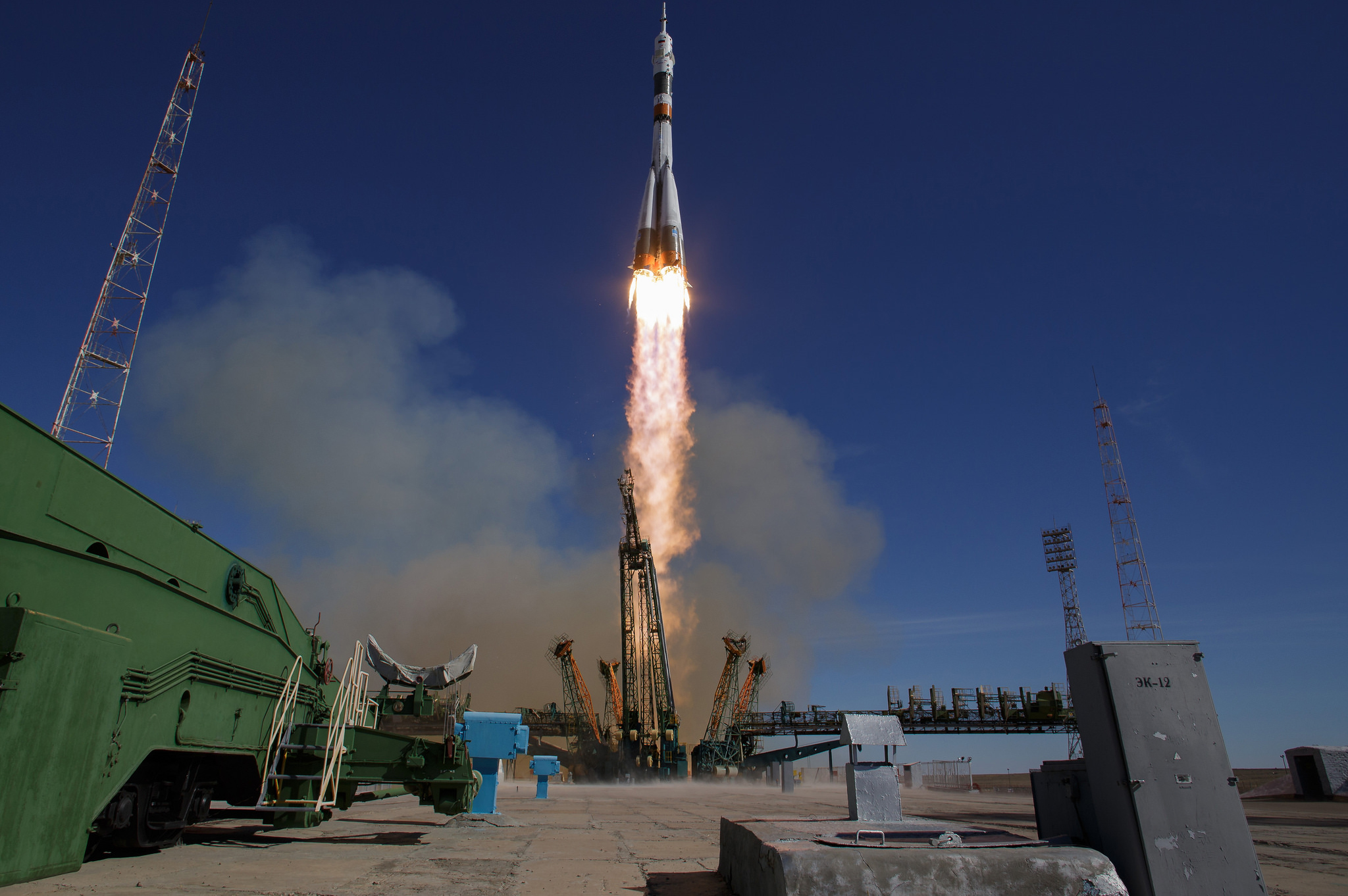Eyewitness Observer of Dramatic Soyuz Launch Abort Describes What He Saw
An eyewitness at the aborted Soyuz launch to the International Space Station Oct. 11 saw an odd smoke trail emerging from the rocket as crew members' craft separated to make a daring landing back on Earth.
Philip Grossman, an urban explorer and contributor to the Science Channel, was in the viewing area for the Expedition 57 launch in Baikonur Cosmodrome, Kazakhstan. The viewing area includes a large platform on which people can watch the launch, roughly 0.9 miles (1.5 kilometers) away.
Bystanders can also watch a big screen with the live-launch broadcast on the Roscosmos Russian space agency channel as well as listen to a loudspeaker from mission controllers in communication with the spacecraft. Grossman estimates that about 500 people were standing there with him watching the rocket lift off. [In Photos: Space Crew's Harrowing Abort Landing After Soyuz Launch Failure]

At first, Grossman said in a new Science Channel videol, everything appeared normal — much like a SpaceX rocket launch he had witnessed earlier this year. But then, he noticed something a little different.
"All of a sudden, probably a minute [and] twenty [seconds] or so into the launch, you couldn't hear any explosion, but you could see a smoke trail. We heard over the loudspeaker — of course, my Russian is very poor — but effectively they said that was normal," Grossman recalled.
He added that in general, he considered the launch a success, because the Russian space program's policies and procedures allowed the two crewmembers to make it down safely. "Even though they never had to use them [the procedures] for some 20-odd years now, they [the astronauts] still practice them and were able to eject," he said.
NASA astronaut Nick Hague and Russian cosmonaut Alexey Ovchinin were reported in good physical health after their descent and landing. Both men spent the night with their families, NASA said in reports yesterday. Hague gave thanks on Twitter today to everyone who supported him.
Get the Space.com Newsletter
Breaking space news, the latest updates on rocket launches, skywatching events and more!
The cause of the abort is still under investigation. Sergei Krikalev, a former astronaut and current director of manned spaceflight at Roscosmos, told reporters Friday (Oct. 12) that so far, officials know that "contact occurred when separating the first and second stages. ... There was a deviation from nominal trajectory and damage to the lower part of the second stage."
Subsequently, the onboard computer stopped the second-stage engines and the Soyuz launch escape system was activated, moving the spacecraft away from the rocket, he added. Krikalev added that preliminary results from the investigation should be ready by Oct. 20.
Roscosmos immediately suspended all flights of the Soyuz rocket and spacecraft, but has not officially moved any scheduled launches; the next crewed one, Expedition 58, was supposed to be on Dec. 20. Yesterday, NASA suggested the agencies are looking at several scenarios for future crewed launches, if future Soyuz launches are delayed. This could include asking the current crewmembers on the space station to stay for a little longer, temporarily decrewing the International Space Station, or some other option.
Follow us on Twitter @Spacedotcom and on Facebook. Original article on Space.com.
Join our Space Forums to keep talking space on the latest missions, night sky and more! And if you have a news tip, correction or comment, let us know at: community@space.com.

Elizabeth Howell (she/her), Ph.D., was a staff writer in the spaceflight channel between 2022 and 2024 specializing in Canadian space news. She was contributing writer for Space.com for 10 years from 2012 to 2024. Elizabeth's reporting includes multiple exclusives with the White House, leading world coverage about a lost-and-found space tomato on the International Space Station, witnessing five human spaceflight launches on two continents, flying parabolic, working inside a spacesuit, and participating in a simulated Mars mission. Her latest book, "Why Am I Taller?" (ECW Press, 2022) is co-written with astronaut Dave Williams.









